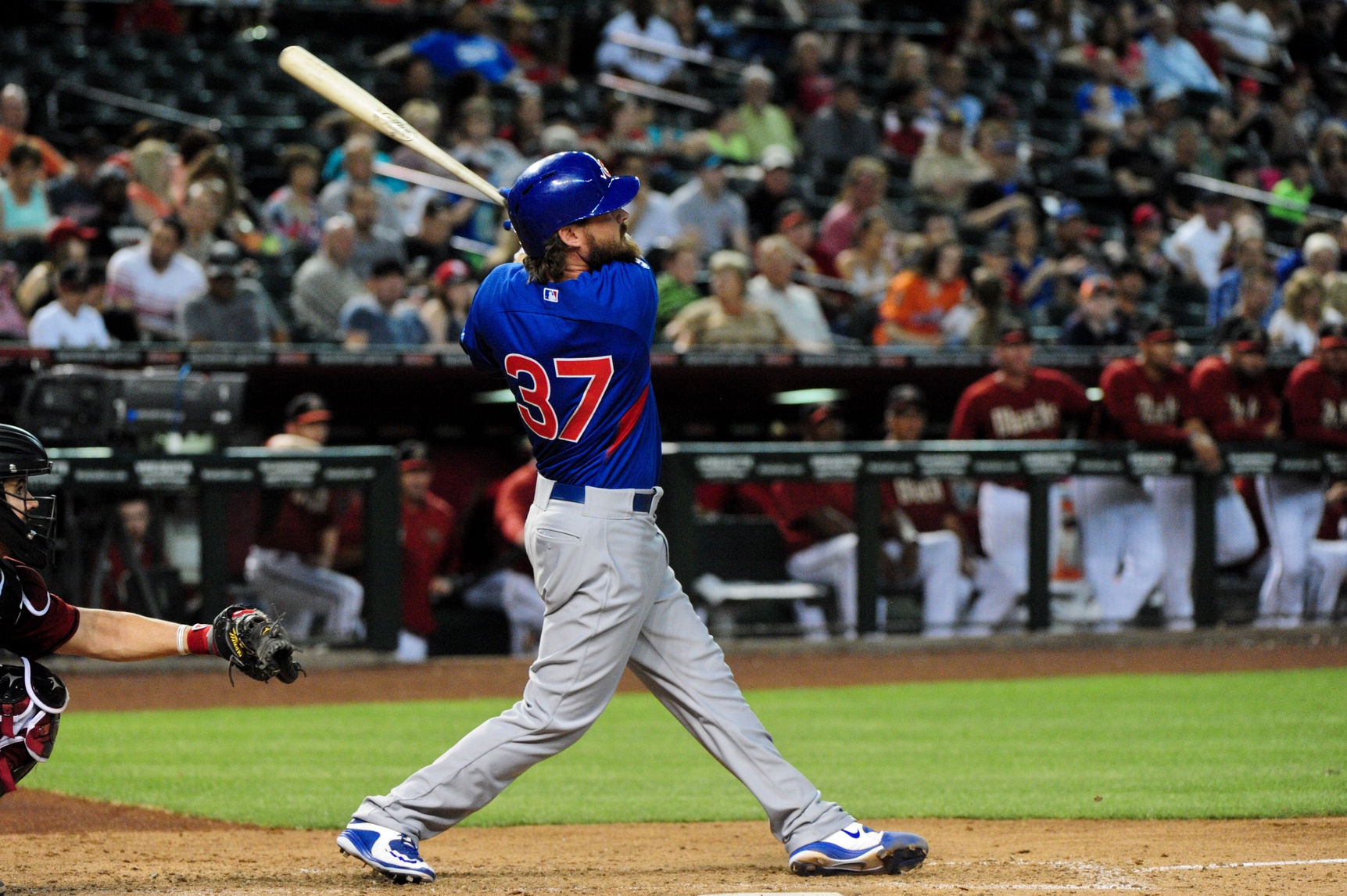Photo courtesy of Matt Kartozian-USA TODAY Sports
The Cubs called up Junior Lake and sent Brian Schlitter down on Monday, and until then they had been carrying a 13-man pitching staff, and there’s many reasons for that. They had a stretch of consecutive games from April 17-29 without an off day, even though they received an unscheduled one in Cincinnati last Saturday (after a mere four-hour wait for the umpires to make the call). It’s also common for starters to not go as long in games early in the season, placing a greater burden on the bullpen that sometimes necessitates carrying a larger pen.
The real impact of a 13-man rotation is on the limitations it places on offense. There are many roles managers want on their bench: a backup catcher, perhaps even two, backup infielder, preferably a shortstop who can play the other infield positions, backup outfielder, left-handed pinch hitter, and a late-inning pinch runner. This totals six (assuming two catchers), and also assumes there’s only one backup infielder and outfielder. There can be overlap, of course, but even at six, that’s two more slots than a 13-man pitching staff allows for. In addition, there are more pinch-hitting opportunities in the National League. Four men on the bench means Maddon can’t burn a pinch-hitter in order to get a preferred hitting matchup, and both backup catchers can’t be used as pinch-hitters all the time in the eventuality that something happens to the starting catcher.
Joe Maddon has been aggressive in using all of his bench. In some games he’s almost gotten himself into a situation with no margin for error, such as in last Wednesday’s game against the Pirates where every bench player had been used, and even Travis Wood entered as a pinch runner in the ninth. The Cubs ended up losing in regulation, but if the game had gone into extra innings, Maddon would have been forced to play Wood in the field. Having four bench players is a strain on the moves a manager can make late in the game, so until baseball rosters are expanded to 26 or more, or if substitution rules are relaxed (neither appear to be realistic possibilities), 13-man pitching staffs will be short-term phenomenons.
The Cubs have a wild card in Wood, the pitcher with the second-most home runs among active pitchers (no. 1 caught me by surprise) and a career .188 batting average. While he isn’t the ideal pinch-hitter, it gives Maddon some flexibility (quick trivia tidbit—Jon Lester has the most plate appearances without a hit among active players). In addition, Edwin Jackson provides a $13-million option in long relief, spot starting, and even being used in high-leverage relief opportunities, another flexibility afforded Maddon that not all teams have. These two unique players gave Maddon some flexibility to use 13 pitchers during this long early season stretch.
In the long term it’s difficult to see a 13-man pitching staff as a reasonable expectation. This was seen pretty clearly in last year’s World Series, when the Royals were able to carry two speed guys in Jarrod Dyson and Terrance Gore because they only had 11 pitchers on their postseason roster. They didn’t need a fifth starter, so they turned that roster spot into Gore, who is now back in the minors as the Royals carry 12 pitchers and can no longer benefit from the luxury of a second speed guy.
Economics is the allocation of scarcity, and in the Cubs case, Maddon has 25 roster spots that he needs to allocate depending on game situation, short-term schedule, how well individual players are playing, and many other factors, and his hands are tied offensively as long as he has only four bench position players, especially when one of them is a third catcher. It worked when he needed it to, which is a testament to his ingenuity and ability to use every player to his fullest capacity, but it probably can’t be sustained over the long term. The extra pitcher got the Cubs through a long stretch of games, but as they enter a more normal schedule with somewhat regular off days, it’s time to return to the traditional 12-man pitching staff.
